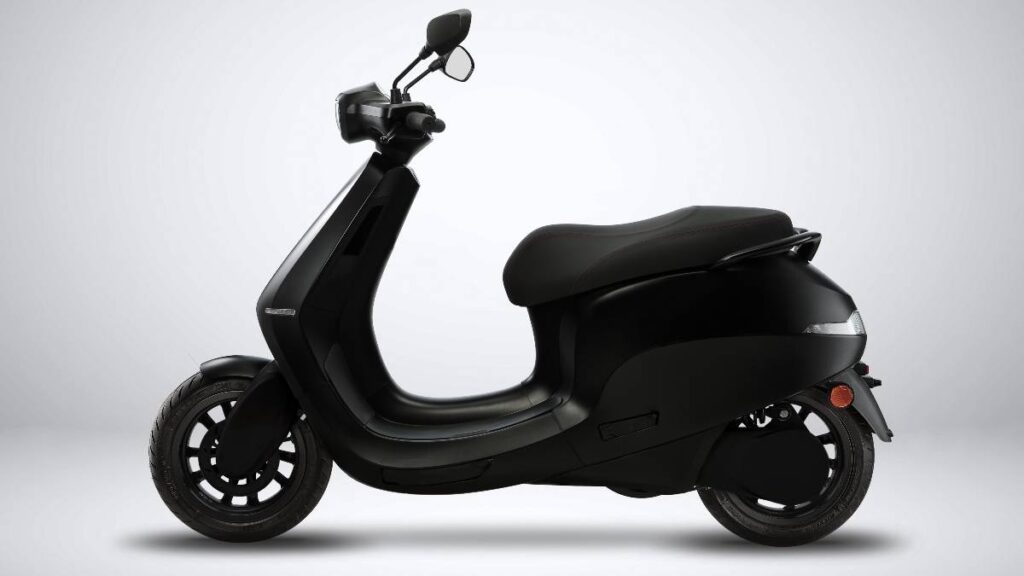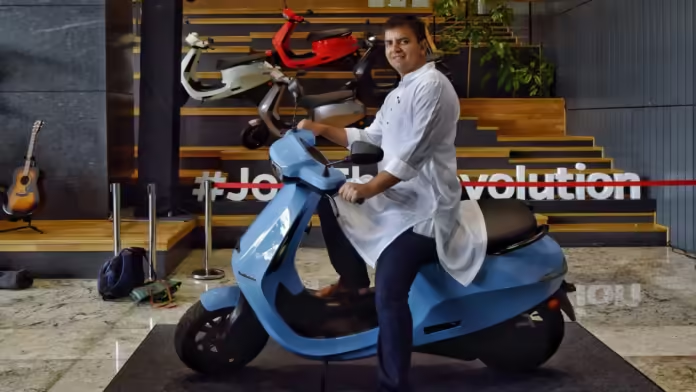Bhavish Aggarwal’s startup, Ola Electric, has been causing a stir in the Indian electric vehicle (EV) industry. Aggarwal has declared the creation of a revolutionary lithium-ion battery that would be called the “Bharat Cell.” Presently undergoing advanced testing, this revolutionary battery has the potential to revolutionise the electric transportation environment in India. This article explores the Bharat Cell’s specifications, possible effects on the EV market, and Ola Electric’s goal of turning India into a worldwide centre for EVs.

A Glimpse into the Ola Electric’s Bharat Cell
Bhavish Aggarwal has praised the Bharat Cell as the “5G of lithium cells”. This comparison highlights the technology’s sophisticated nature, which is something that only a small number of businesses worldwide have attained. The Bharat Cell has several benefits over conventional lithium batteries that have the potential to drastically change the business of electric mobility in India and beyond.
Before the Bharat Cell can start commercial production at Ola’s Gigafactory, it must first obtain certification from the Bureau of Indian Standards. A major accomplishment, given that India now depends mostly on foreign lithium cell batteries, is this accreditation. These batteries account for a sizable portion of the total cost associated with producing electric cars.
Also Read :- Hyundai Motor Breaks Sales Records ahead of $3 Billion IPO
Ola Electric’s Vision: Developing India into the World’s EV Centre
Aggarwal has a clear but ambitious ambition for Ola Electric: to establish India as a worldwide centre for electric cars. In order to fulfil this aim, items like two- and three-wheelers that are specifically designed for the Indian market must be expanded throughout the Global South. The development of lithium technology in India is essential to this goal, and Ola Electric is approaching this task by integrating backwards into lithium technology.
The 2170 battery now commands the majority of the market, but the 4680 battery is anticipated to overtake it as the new norm. More energy capacity, quicker charging times, and less production and retail prices are all provided by the 4680 battery. With its better specs, the Bharat Cell is expected to compete with these current technologies and maybe outperform them.

Particular Benefits of the Bharat Cell
The Bharat Cell is intended to outperform current batteries in terms of performance and cost by being five times more energy-efficient. For electric cars, where charging speed is a major concern for users, its quick charging capabilities is an essential characteristic. The Bharat Cell also utilises less cobalt, which lowers expenses even further while preserving great energy density. The Bharat Cell delivers more energy in the same weight than the existing norm of 250 Watt-hour per kg, with an energy density of 275 Watt-hour per kg.
Manufacturing at Tamil Nadu’s EV Hub for Ola
Production of the Bharat Cell would be conducted at Ola’s 1500-2000-acre EV centre in Tamil Nadu. This plant is expected to grow into a key hub for producing state-of-the-art EV technologies, enhancing India’s standing in the international EV industry.
The cathode-anode technology of the Bharat Cell is a vital component. Even while Ola Electric produces the cathode and anode, imports of the necessary ingredients are still necessary from nations like China, Japan, Korea, and Europe. The performance of the battery depends on these substances, sometimes referred to as cathode active material and anode active material. Graphite is commonly used as the anode and a mixture of elements such as nickel, cobalt, and manganese for the cathode.
The Way Forward: Difficulties and Possibilities
Although the creation of the Bharat Cell is an important accomplishment, there are still a number of obstacles to overcome. The success of this endeavour will depend on a number of crucial factors, including scaling up production, improving supply chain efficiency, and localising the manufacturing of cathode and anode materials. The potential benefits, nevertheless, are enormous. If the Bharat Cell is implemented successfully, it might establish India as a leader in the global EV industry, draw significant investments, and provide a large number of employment opportunities.
Conclusion
With the potential to completely transform the Indian electric mobility environment, the Bharat Cell is a tremendous advancement in lithium battery technology. The bold goal of Bhavish Aggarwal’s vision for Ola Electric is to establish India as a worldwide centre for electric vehicles. Ola Electric is clearing the path for a profitable and sustainable future for electric transportation in India by concentrating on cutting-edge technology and localising production.
Disclaimer: The information provided in this article is based on publicly available sources and may not be 100% accurate.

